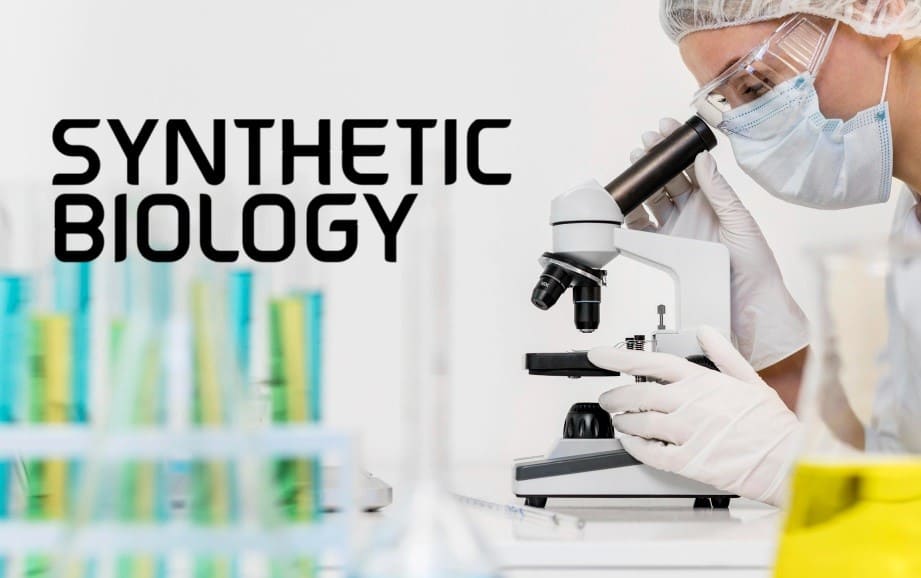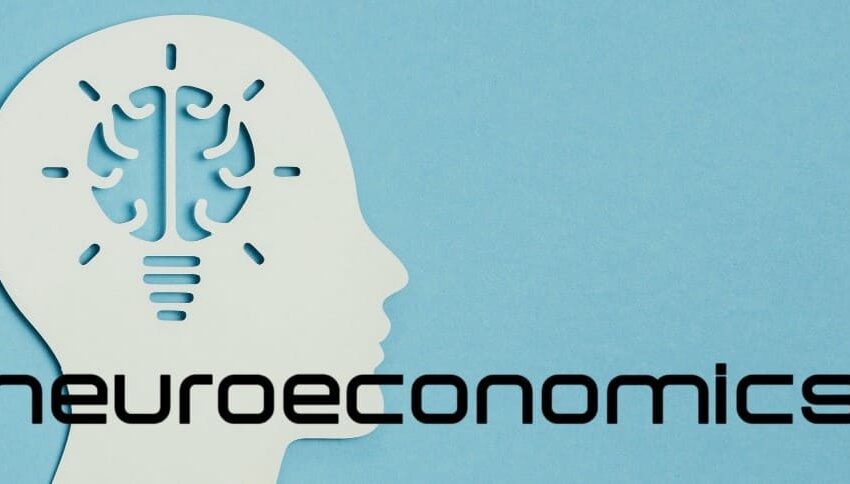
Overview:
To understand what is Synthetic biology, we need to first take a dig in an emerging field that merges principles from biology, engineering, and computer science to design and construct new biological entities or modify existing ones. This innovative discipline has the potential to revolutionize various industries by enabling precise control over biological systems. By assembling biological parts and systems in novel ways, scientists can create organisms with entirely new functions or enhance the capabilities of existing ones. Synthetic biology’s promise extends from medicine and agriculture to environmental sustainability and industrial applications.
The potential of synthetic biology to address some of the world’s most pressing challenges is immense. From creating personalized medical treatments and developing robust crops to producing sustainable biofuels and cleaning up environmental pollutants, the applications are both vast and varied. However, along with these opportunities come significant challenges and risks. Ensuring that synthetic biology advances safely and ethically requires robust regulations, thoughtful risk management, and continuous dialogue among scientists, policymakers, and the public. This article explores the benefits, applications, challenges, and regulatory frameworks that shape the landscape of synthetic biology.
Contents:
- What is Synthetic Biology
- Understand it in a layman’s way
- Understand it better with the practical uses
- Key components of Synthetic Biology
- Key applications of Synthetic Biology
- Key benefits of Synthetic Biology
- Key challenges and risks with Synthetic Biology
- Key regulations and compliances for Synthetic Biology
- Summing Up
So, what is Synthetic Biology:
Synthetic Biology is an interdisciplinary field that combines principles from biology, engineering, and computer science to design and construct new biological parts, devices, and systems, or to redesign existing biological systems for useful purposes.
Let’s understand it in a layman’s way:
Imagine you could tinker with living things the way you build with LEGO blocks. That’s the basic idea behind synthetic biology. Here’s a simple way to understand it:
Building Blocks of Life: Just like LEGO blocks, living things are made up of tiny parts called genes. Genes are pieces of DNA that tell living things how to grow and function.
Redesigning Life: Synthetic biology is like being a biological engineer. Scientists take genes and mix and match them to create new combinations. They can even make entirely new genes from scratch.
Creating New Organisms: By putting these new gene combinations into living things, scientists can create organisms that do things nature never intended. For example, they might make bacteria that can clean up oil spills or plants that can produce medicines.
Now understand the practical uses in layman’s way:
1. Medicine: Imagine a yogurt that fights off infections inside your body. Scientists can design bacteria to do just that.
2. Agriculture: They can create crops that need less water or resist pests without needing harmful pesticides.
3. Environment: They can develop organisms that eat plastic waste or convert sunlight directly into clean energy.
4. Safety and Ethics: Just like any powerful tool, synthetic biology needs to be used carefully. There are rules and guidelines to make sure these new organisms don’t cause harm to people or the environment.
Key components of Synthetic Biology:
1. DNA Sequencing and Synthesis:
DNA Sequencing: Determining the exact order of nucleotides in a DNA molecule. This is crucial for understanding the genetic makeup of organisms.
DNA Synthesis: Creating custom DNA sequences in the lab. This allows scientists to design and build new genetic material from scratch.
2. Genetic Engineering Tools:
CRISPR-Cas9: A powerful tool for editing genes with high precision. It can add, remove, or alter specific DNA sequences within an organism’s genome.
Plasmids and Vectors: Circular DNA molecules used to introduce new genes into an organism. Plasmids act as carriers for the genetic material being inserted.
3. Standardized Biological Parts:
BioBricks: Standardized DNA sequences that can be easily combined to build new biological systems. These parts can be mixed and matched like building blocks.
Parts Registries: Databases that catalog standardized biological parts, making it easier for scientists to find and use existing components.
4. Genetic Circuits:
Promoters, Ribosome Binding Sites, and Terminators: Elements that control the expression of genes. Promoters start gene transcription, ribosome binding sites initiate protein synthesis, and terminators signal the end of transcription.
Regulatory Elements: Sequences that regulate gene expression, such as enhancers and silencers.
5. Host Organisms:
Model Organisms: Commonly used organisms like E. coli, yeast, and mice that serve as platforms for synthetic biology experiments.
Chassis: Engineered organisms designed to host synthetic biological systems. They provide a controlled environment for the new genetic material to function.
6. Computational Tools:
Bioinformatics: Software and algorithms used to analyze and interpret biological data. These tools help design and predict the behavior of synthetic systems.
Computer-Aided Design (CAD): Software that allows scientists to design genetic circuits and biological systems before building them in the lab.
7. Metabolic Engineering:
Pathway Design: Engineering metabolic pathways to produce desired compounds, such as biofuels, pharmaceuticals, or industrial chemicals.
Flux Analysis: Studying the flow of metabolites through a metabolic network to optimize the production of target compounds.
8. Safety and Ethical Considerations:
Biocontainment Strategies: Methods to prevent engineered organisms from surviving outside controlled environments.
Ethical Guidelines: Frameworks and policies to ensure responsible use of synthetic biology, addressing potential risks and societal impacts.
Key applications of Synthetic Biology:
1. Medicine:
Personalized Medicine: Designing tailored therapies based on an individual’s genetic makeup. Synthetic biology can create customized drugs and treatments that target specific genetic profiles.
Gene Therapy: Using engineered genes to treat or prevent diseases by correcting defective genes or introducing new genes into a patient’s cells.
Vaccine Development: Creating new, more effective vaccines rapidly. For example, synthetic biology played a crucial role in the development of COVID-19 mRNA vaccines.
Synthetic Biology-Based Diagnostics: Developing rapid and accurate diagnostic tools, such as CRISPR-based tests, to detect diseases at an early stage.
2. Agriculture:
Crop Improvement: Engineering crops to be more resistant to pests, diseases, and environmental stresses like drought and salinity.
Nutrient-Enriched Foods: Creating genetically modified crops with enhanced nutritional profiles, such as rice fortified with vitamins.
Biopesticides and Biofertilizers: Developing sustainable alternatives to chemical pesticides and fertilizers by engineering microbes that promote plant growth and protect against pests.
3. Environmental Applications:
Bioremediation: Designing organisms that can break down pollutants and toxins in the environment, such as oil spills, heavy metals, and plastic waste.
Carbon Sequestration: Engineering plants and microorganisms to capture and store carbon dioxide from the atmosphere, helping to mitigate climate change.
4. Energy:
Biofuels: Producing renewable energy sources by engineering microbes to convert biomass into biofuels like ethanol, butanol, and biodiesel.
Synthetic Photosynthesis: Creating systems that mimic natural photosynthesis to produce energy-rich compounds using sunlight, water, and carbon dioxide.
5. Industrial Biotechnology:
Biomanufacturing: Using engineered organisms to produce chemicals, materials, and pharmaceuticals in a more sustainable and cost-effective manner. This includes the production of biodegradable plastics and high-value chemicals.
Enzyme Engineering: Designing and optimizing enzymes for industrial processes, improving efficiency and reducing environmental impact.
6. Food and Nutrition:
Synthetic Meat: Developing lab-grown meat and other alternative protein sources to reduce the environmental impact of traditional livestock farming.
Probiotics and Functional Foods: Engineering beneficial microbes to enhance gut health and deliver specific nutrients or therapeutic compounds.
7. Synthetic Biology in Space:
Life Support Systems: Designing microbes to recycle waste and produce essential nutrients, oxygen, and water for long-term space missions.
Resource Utilization: Engineering organisms to produce materials and chemicals needed for building infrastructure on other planets, such as Mars.
8. Novel Materials:
Biofabrication: Creating new materials with unique properties by engineering biological systems, such as spider silk produced by yeast or bacteria.
Living Materials: Developing materials that can grow, self-repair, and adapt to their environment, combining the properties of biological tissues with synthetic materials.
Key benefits of Synthetic Biology:
1. Precision and Efficiency:
Targeted Therapies: Synthetic biology enables the development of highly specific treatments, such as targeted gene therapies, that can precisely address genetic disorders without affecting other parts of the genome.
Efficient Production: Engineered microorganisms can produce pharmaceuticals, biofuels, and chemicals more efficiently and sustainably compared to traditional methods.
2. Sustainability:
Environmental Cleanup: Engineered organisms can break down pollutants and toxic substances, providing eco-friendly solutions for bioremediation.
Reduced Dependency on Fossil Fuels: Biofuels and bioplastics produced through synthetic biology reduce reliance on fossil fuels, contributing to a more sustainable and circular economy.
3. Improved Health Outcomes:
Advanced Diagnostics: Rapid and accurate diagnostic tools, such as CRISPR-based tests, can detect diseases at an early stage, leading to better health outcomes.
Novel Vaccines and Therapies: Synthetic biology accelerates the development of new vaccines and therapies, including personalized medicine that is tailored to individual genetic profiles.
4. Agricultural Advancements:
Enhanced Crop Resilience: Crops engineered to withstand pests, diseases, and environmental stresses can lead to higher yields and more stable food supplies.
Nutrient-Rich Foods: Biofortification of crops with essential vitamins and minerals can address malnutrition and improve public health.
5. Economic Benefits:
Cost-Effective Manufacturing: Biological production methods can be more cost-effective than traditional industrial processes, reducing production costs for various goods.
Job Creation: The growth of the synthetic biology industry can create new job opportunities in research, development, and biomanufacturing.
6. Innovation and Creativity:
Novel Materials: Synthetic biology allows for the creation of new materials with unique properties, such as spider silk produced by engineered yeast, which can lead to innovative applications in various industries.
Living Systems: Developing living materials that can self-repair and adapt to their environment opens up new possibilities for sustainable and resilient infrastructure.
7. Environmental Impact:
Carbon Sequestration: Engineered organisms can capture and store carbon dioxide, helping to mitigate climate change.
Sustainable Agriculture: Bioengineered crops and biofertilizers can reduce the need for chemical pesticides and fertilizers, decreasing the environmental impact of agriculture.
8. Space Exploration:
Life Support and Resource Utilization: Synthetic biology can support long-term space missions by recycling waste, producing food, and generating essential resources like oxygen and water.
9. Biological Understanding:
Fundamental Research: Synthetic biology provides tools to better understand biological processes, leading to new discoveries and insights into the mechanisms of life.
10. Public Health and Safety:
Disease Prevention: Engineered probiotics can promote gut health and prevent diseases, while synthetic biology-based insect control methods can reduce the spread of vector-borne diseases like malaria and Zika.
Key challenges and risks with Synthetic Biology:
1. Biosecurity Risks:
Bioterrorism: The ability to engineer pathogens could be misused to create harmful biological agents, posing a threat to national and global security.
Dual-Use Concerns: Technologies developed for beneficial purposes can be repurposed for harmful applications, requiring stringent oversight and regulation.
2. Ethical and Social Issues:
Ethical Dilemmas: The creation of synthetic life forms raises ethical questions about the extent to which humans should manipulate life.
Public Acceptance: There may be public resistance or fear regarding the use of genetically modified organisms (GMOs), impacting the adoption of synthetic biology innovations.
3. Regulatory and Governance Challenges:
Lack of Standardization: The rapidly evolving nature of synthetic biology makes it difficult to establish and maintain standardized regulations.
International Coordination: Ensuring consistent regulatory frameworks across different countries is challenging, which is crucial for managing global biosecurity risks.
4. Unintended Consequences:
Ecological Impact: The release of engineered organisms into the environment could disrupt ecosystems, leading to unintended and potentially harmful ecological effects.
Gene Flow: Engineered genes could transfer to wild populations, causing unpredictable genetic changes in natural organisms.
5. Technical and Scientific Challenges:
Complexity of Biological Systems: Living systems are inherently complex and not always predictable, making it difficult to achieve desired outcomes with precision.
Off-Target Effects: Genetic modifications can have unintended effects on other parts of the genome, potentially leading to harmful or unforeseen consequences.
6. Intellectual Property and Access:
Patent Issues: The patenting of synthetic biology technologies and genetic sequences can lead to legal disputes and hinder research collaboration.
Access and Equity: Ensuring that the benefits of synthetic biology are accessible to all, particularly in low- and middle-income countries, is a significant challenge.
7. Economic Displacement:
Job Losses: Automation and the use of engineered organisms in industrial processes could lead to job losses in traditional sectors.
Market Disruption: Synthetic biology products could disrupt existing markets, affecting industries reliant on traditional methods.
8. Scientific Integrity and Trust:
Research Misconduct: The competitive nature of the field might lead to instances of research misconduct or data manipulation.
Transparency: Maintaining transparency in research and development processes is crucial to build public trust and avoid misinformation.
9. Long-Term Effects:
Health Implications: The long-term health effects of consuming or interacting with synthetic biology products are not yet fully understood and require thorough investigation.
Ecosystem Balance: Long-term monitoring is necessary to understand the impact of synthetic organisms on ecosystem balance and biodiversity.
10. Resource Allocation:
Funding and Investment: Securing consistent funding and investment for synthetic biology research can be challenging, particularly for high-risk, high-reward projects.
Infrastructure Development: Developing the necessary infrastructure for large-scale biomanufacturing and synthetic biology applications requires significant investment and coordination.
Key regulations and compliances for Synthetic Biology:
The field of synthetic biology is subject to various regulations and compliance measures to ensure safety, ethical standards, and responsible use. Key regulations and compliance frameworks for synthetic biology include:
1. Biosafety Regulations:
Containment Protocols: Regulations that mandate the use of containment facilities, such as Biosafety Level (BSL) labs, to handle genetically engineered organisms.
Risk Assessment: Procedures for assessing the risks associated with synthetic biology experiments, including potential environmental and health impacts.
2. Biosecurity Measures:
Dual-Use Research Oversight: Policies to identify and manage research that could be misused for harmful purposes, such as the creation of bioweapons.
Export Control Laws: Regulations controlling the export of materials and technologies related to synthetic biology to prevent their use in bioterrorism.
3. Environmental Regulations:
Environmental Impact Assessments: Requirements for evaluating the potential environmental consequences of releasing synthetic organisms into the environment.
Gene Drive Regulations: Specific guidelines for the use of gene drives, which can spread genetic modifications through populations, to prevent ecological disruption.
4. Ethical Guidelines:
Institutional Review Boards (IRBs): Committees that review research proposals involving synthetic biology to ensure ethical standards are met, particularly in human and animal studies.
Public Engagement and Transparency: Encouraging scientists and companies to engage with the public and be transparent about their research and its implications.
5. Intellectual Property (IP) and Patents:
Patent Laws: Regulations governing the patenting of synthetic biology innovations, balancing the protection of intellectual property with the need for open scientific collaboration.
Access and Benefit Sharing: Compliance with international agreements, such as the Nagoya Protocol, to ensure fair sharing of benefits arising from the use of genetic resources.
6. International Treaties and Agreements:
Cartagena Protocol on Biosafety: An international treaty governing the transboundary movements of genetically modified organisms (GMOs) to protect biodiversity.
Convention on Biological Diversity (CBD): An agreement aimed at conserving biological diversity, promoting sustainable use, and ensuring fair sharing of benefits.
7. National and Regional Regulations:
U.S. Regulations: The Coordinated Framework for the Regulation of Biotechnology, which involves the FDA, EPA, and USDA, to oversee synthetic biology activities.
European Union (EU) Regulations: Directives such as the GMO Directive, which governs the release and commercialization of genetically modified organisms in the EU.
8. Standards and Guidelines:
ISO Standards: International Organization for Standardization (ISO) provides standards for biotechnology processes, including ISO 9001 for quality management and ISO 14001 for environmental management.
Synthetic Biology Guidelines: Guidelines developed by organizations such as the National Institutes of Health (NIH) and the World Health Organization (WHO) for safe and ethical research practices.
9. Compliance and Monitoring:
Inspection and Enforcement: Regular inspections and enforcement actions by regulatory agencies to ensure compliance with biosafety, biosecurity, and environmental regulations.
Reporting Requirements: Mandatory reporting of research activities, incidents, and adverse events related to synthetic biology to relevant authorities.
10. Public Health Regulations:
FDA Approval: In the U.S., the Food and Drug Administration (FDA) evaluates and approves synthetic biology products, such as genetically engineered foods and medical therapies, for safety and efficacy.
European Medicines Agency (EMA): The EMA oversees the evaluation and approval of synthetic biology-derived medical products in the European Union.
Summing Up:
Synthetic biology stands at the intersection of biology, engineering, and computer science, offering groundbreaking possibilities to redesign and create new biological systems. By leveraging the precision of genetic engineering, synthetic biology aims to address some of the most pressing challenges in medicine, agriculture, environmental sustainability, and industrial processes. From developing personalized therapies and innovative vaccines to engineering resilient crops and sustainable biofuels, the potential applications are vast and transformative.
However, the promising advancements in synthetic biology come with significant challenges and risks that must be carefully managed. Issues such as biosecurity, ethical concerns, environmental impacts, and regulatory complexities underscore the need for robust oversight and responsible stewardship. Ensuring safety, transparency, and ethical conduct in research and application is paramount to garner public trust and realize the benefits of synthetic biology. As the field continues to evolve, ongoing dialogue among scientists, policymakers, and the public is essential to navigate its complexities and harness its full potential responsibly.
Courtesy Image: FreePik











